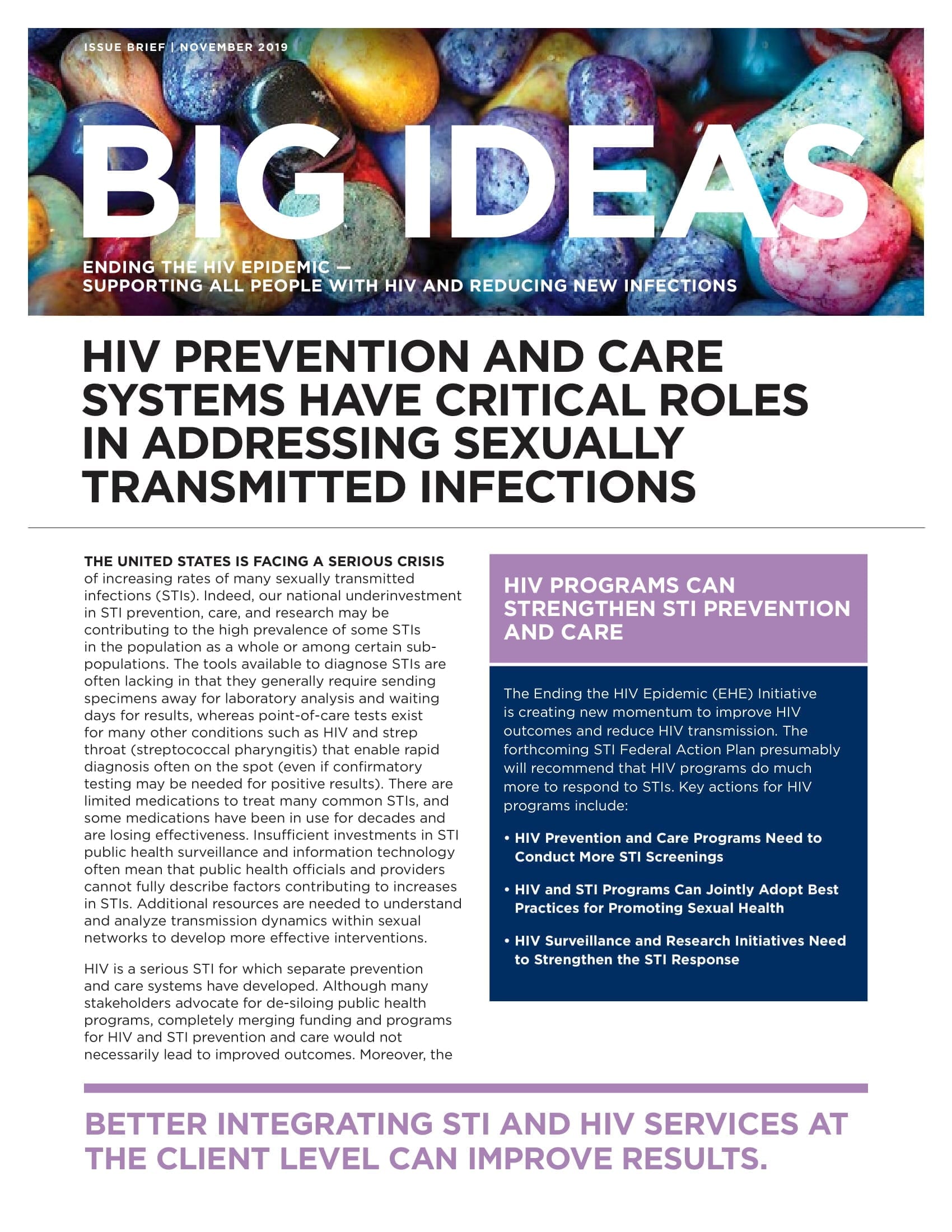This week, the O’Neill Institute released a new brief, Big Ideas: HIV Prevention and Care Systems Have Critical Roles in Addressing Sexually Transmitted Infections. This brief discusses key actions for HIV programs to reduce the public health impact of sexually transmitted infections (STIs) in the United States. It was written by me and Jeffrey S. Crowley, Program Director of the O’Neill Institute’s Infectious Diseases Initiative, and was informed by a stakeholder consultation in February 2019.
The United States continues to face a serious crisis of STIs and has dramatically underinvested in responding to the crisis. Last month, the Centers for Disease Control and Prevention (CDC) released data showing that STIs hit a record high of more than 2.4 million cases in 2018, after five consecutive years of increases in cases of chlamydia, gonorrhea, and syphilis. From 2017 to 2018, chlamydia increased 3 percent to more than 1.7 million cases, the most ever reported to the CDC, and gonorrhea increased 5 percent to more than 580,000 cases, the highest number reported to CDC since 1991. Primary and secondary syphilis increased 14 percent between 2017 and 2018 to more than 35,000 cases. Of particular concern are increasing cases of syphilis in newborns, called congenital syphilis. Cases of congenital syphilis increased 40 percent from 2017 to 2018, and newborn deaths associated with congenital syphilis increased 22 percent. STIs can have a number of life-changing and life-threatening consequences, including infertility, ectopic pregnancy, and pelvic inflammatory disease.
HIV is a serious STI for which separate prevention and care systems have developed. While it is not on HIV programs alone to solve the STI crisis, these programs have the capacity and can to do more to contribute to a stronger public health response in the face of increasing STI rates. The brief identifies three areas where HIV programs can support STI prevention and control:
- HIV prevention and care programs need to conduct more STI screenings;
- HIV and STI programs can jointly adopt best practices for promoting sexual health; and
- HIV surveillance and research initiatives need to strengthen the STI response.
For each of these areas, the brief outlines specific actions for impact. For example, with respect to conducting more STI screenings, we recommend that CDC review its guidance for all programs funding HIV screening and explore options to ensure that HIV funds can be used to pay for recommended STI screening as part of an integrated HIV-STI testing encounter. We also call for CDC to work with other public and private entities to ensure that quality measures (i.e. HEDIS measures and National Quality Forum measures) and United States Preventive Services Task Force (USPSTF) recommendations are aligned with CDC guidelines.
To facilitate best practices for sexual health promotion, our recommendations include the Department of Health and Human Services funding major social media campaigns and public-private partnerships to further destigmatize marginalized populations seeking sexual health services and to better inform the public of the consequences of untreated STIs in non-stigmatizing ways. Promoting greater support across the country for age-appropriate, medically-accurate and LGBT-affirming sexual health education in school settings also is important. Additionally, research is critical to addressing STIs. As such, we call for existing HIV surveillance and research programs to do more to improve understanding of STI transmission dynamics.
While great strides have been made in promoting the health of people living with HIV and preventing new HIV infections, more can be done to enhance STI prevention, screening, and treatment. By taking deliberate steps to better align their programs and services, HIV and STI programs can strengthen the public health response to STIs.




